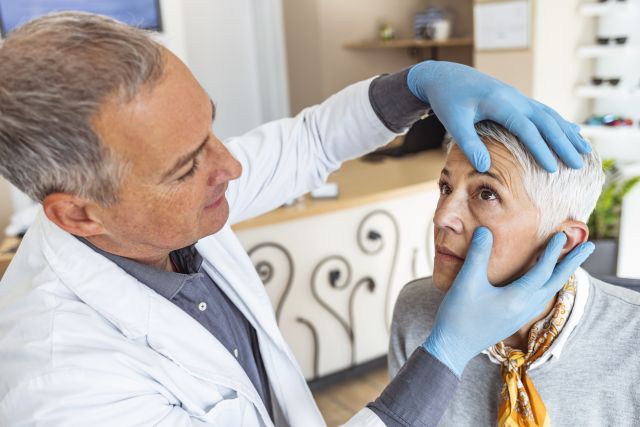Wet AMD is the less common form of age-related macular degeneration, but it can progress quickly and can cause severe vision loss.
If you or a loved one has wet AMD, it’s important to seek treatment from an ophthalmologist, a healthcare provider that specializes in the care of the eye and the treatment of disorders that affect the eyes.
Understanding the eye
Before going to an appointment, it can help to have a basic understanding of the parts of the eye that are affected by wet AMD:
- The retina. This is a layer of light-sensitive nerve cells located in the back of the eye, near the optic nerve. The retina takes light that enters the lens of the eye and converts it into nerve signals that are transmitted to the brain.
- The macula. This is the center and most sensitive part of the retina. The macular allows the human eye to read fine print, discern different shades of colors, and see things in sharp detail.
- Blood vessels. Like all other parts of the body, the eyes depend on a continuous flow of blood to deliver oxygen and nutrients in order to function.
- Drusen. These are deposits of cellular byproducts that can build up near the retina. These byproducts come from the metabolic processes that occur when the eyes use energy.
Understanding wet AMD
While it is not fully understood why AMD occurs, it is believed to be the result of drusen blocking oxygen and nutrients from reaching the eye.
Cut off from this supply, cells in the retina die. As the eyes try to cope with this problem, new, abnormal blood vessels may grow beneath the retina. These blood vessels can leak blood and fluids into the eye and damage the retina.
Anti-VEGF therapy
There are treatments for wet AMD that can stop blood vessel leakage, which will slow the progression of vision loss. Some patients also see an improvement in vision with treatment.
The most commonly used—and preferred—treatment for wet AMD is something called anti-VEGF therapy, which is short for “anti-vascular endothelial growth factor” therapy. This approach uses drugs that inhibit the growth of new blood vessels.
Anti-VEGF drugs are injected into the eye, which can be an intimidating prospect for new patients. The procedure is not painful—patients describe feeling pressure against the eye—and it only takes a few seconds. Injections are typically given every four to six weeks.
There are several anti-VEGF drugs available, and the decision of which one to use will be made by you and your healthcare provider.
Other treatment options
Photodynamic therapy and laser coagulation are two other treatment options. These are less commonly used—they are less effective and have a greater risk of side effects.
With photodynamic therapy, a drug is injected into a vein in the arm. This drug is designed to absorb into growing blood vessels. Once the drug has reached the abnormal blood vessels growing in the eye, it is activated using a laser. Activating the drug causes it to close off the abnormal blood vessels.
A type of laser surgery called laser coagulation uses a thermal laser to burn and close leaking blood vessels.
Staying healthy
Following a healthy lifestyle can also play an important role in managing AMD and keeping your eyes as healthy as possible. A healthy lifestyle includes:
- Eating a heart-healthy diet
- Getting regular exercise
- Maintaining a healthy weight
- Quitting smoking (if you smoke) and avoiding second-hand smoke
- Managing other health conditions like high cholesterol, high blood pressure, and diabetes
- Protecting the eyes from the sun
- Taking nutritional supplements recommended by your healthcare provider
Healthy habits can help slow the progression of dry AMD and are also important to your overall health.
Additionally, low vision rehabilitation can also help people who have experienced vision loss adapt to changes and make the best use of their vision.






